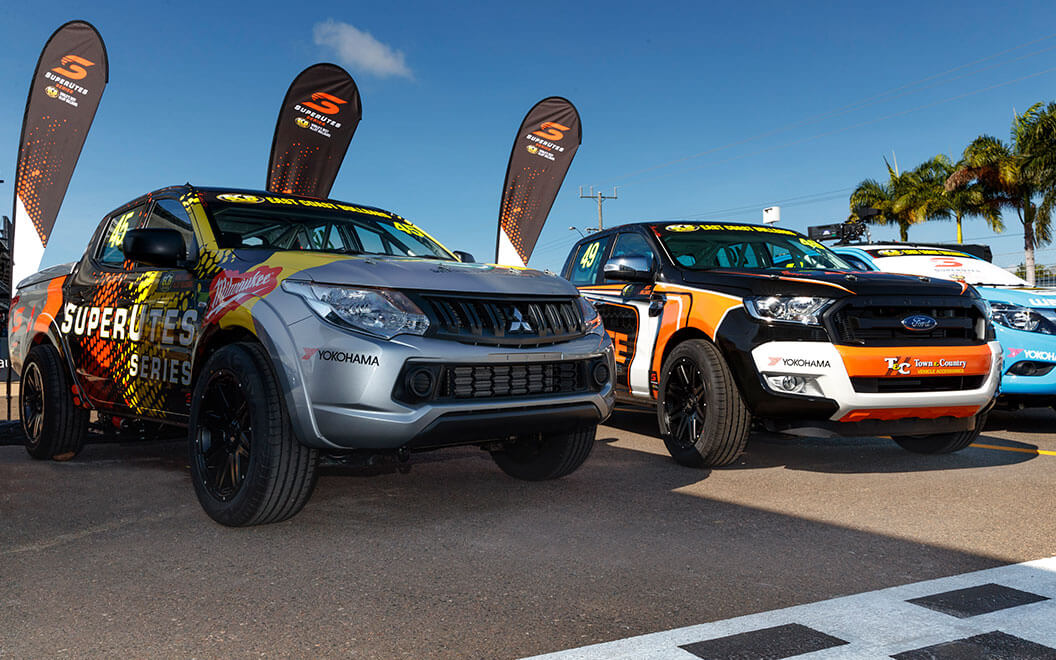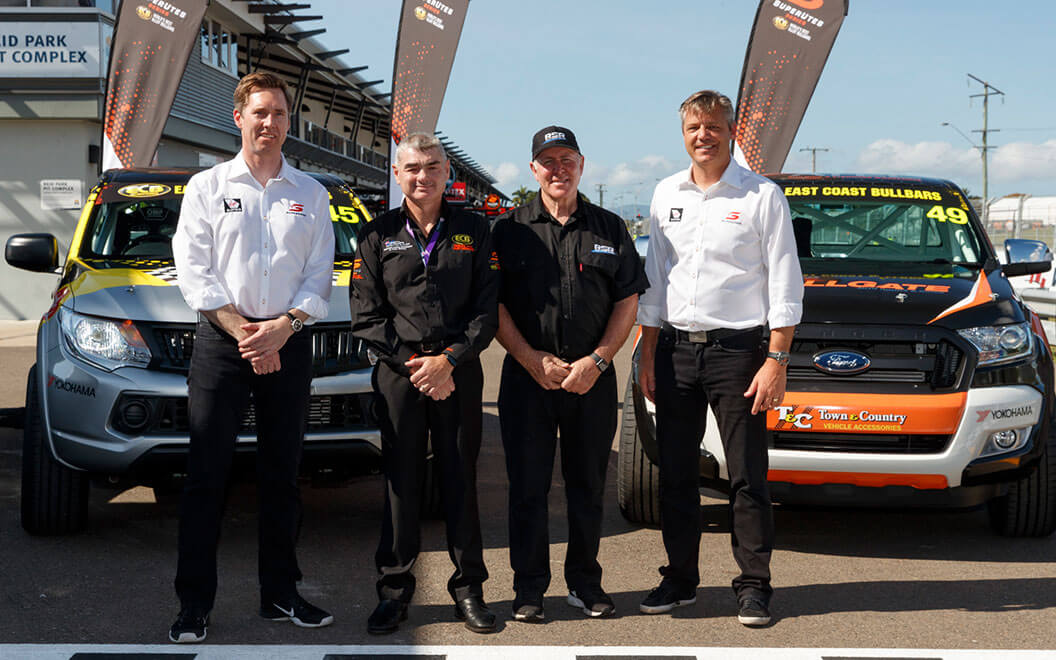The promoters, Supercars, are spruiking the potential sales benefits of participating in the new SuperUtes series, and are keen to get as many manufacturers involved as possible.
Selling utes is big business in Australia. Currently, the country’s two most popular cars are utes, and there are four others in the top 20. The Toyota HiLux and Ford Ranger have been topping the VFACTS monthly figures for a while now.
The six utes in VFACTS top 20, the Mitsubishi Triton, Holden Colorado, Isuzu D-Max and Nissan Navara in addition to the two already mentioned, sold 20,574 units in June alone. The Ranger by itself accounts for about half Ford’s total sales in this country.
In addition to being keen on buying utes, Aussies have also liked to race them. Since 2001 there has been a national V8 ute racing series where Falcon and Holden utes have slugged it out, often as a support category at major Supercars events such as the Bathurst 1000.
But with the Falcon gone and the Holden ute soon to follow, there is a concerted push to replace the V8 utes with diesel powered twin-cabs.
The first two SuperUtes, a Ford Ranger and a Mitsubishi Triton, were unveiled in Townsville last weekend and are scheduled to begin a track testing program within the next month.
The Mazda BT-50, Toyota HiLux, Isuzu D-Max and Holden Colorado have also been homologated for the category, with a BT-50 the next set to be built.
It has been a fraught process to get to this point. Supercars took over the V8 Utes competition from its original organisers last year as efforts to build silhouette style pick-ups on a purpose built racing chassis failed.

Since then both the concept underpinning the series and its launch date have moved significantly. The new series was originally to kick-off about now but has been delayed until the beginning of next year
The SuperUtes will now be production based with competitors being sold a kit of components for about $60,000 to prepare the standard production vehicles for racing. The kit will include a control gearbox and diff along with an approved brake and suspension package.
The idea is to achieve a safe and reliable vehicle at an affordable (in racing terms) price that generates an exciting spectacle. From a manufacturer’s point of view that will be essential if the exercise is to generate any extra sales as well.
Much of the technical risk with this project has been mitigated by the recent appointment of highly regarded motorsport identity Ross Stone to advise on the technical development of the competition kits for each model.
Win on Sunday sell on Monday was the adage in production car racing a long, long time ago. It may have even been true back then when the cars raced on the track were virtually identical to the ones available in the showroom.
But these days most car racing is about parity between various makes and models, and the more the SuperUtes are modified for racing the less relevant the competition between them will be to potential buyers.
Some modifications, such as a roll cage, are inevitable, but it will be a curious element to many that in this form of racing the promoters have chosen to modify the vehicles so that all entrants from all brands will perform about the same.
It will be more a test of driver skills than of the pick-up brands racing, and it remains to be seen if this form of meddling in the configuration will translate the desired hero effect from the race track to the showroom.
Conversely, parity racing with vehicles specially enhanced for competition purposes is often a more attractive proposition to manufacturers, none of whom want to see their products blown away by the other brands or reduced to a smouldering mess by the side of the track.
As mentioned earlier, ute sales are big business, and so is selling accessories. Dealers are likely to gross more on accessories than they are on selling the ute.
Little surprise then that the new SuperUtes series has already attracted a major sponsor from the accessory supply chain. East Coast Bullbars have been involved with the current V8 ute series and clearly see value in being involved as naming rights sponsor of the new series.
Will the new form of ute racing be entertaining and will people pay to watch it? The SuperUtes series raises as many questions as it answers.
It will get some free-to-air TV coverage when it coincides with the half dozen or so Supercars rounds still shown on that medium. Other than that it will be limited to paying customers at the track or on Foxtel.
The first round is scheduled to be at Adelaide in March next year and many will be watching to see what the punters think.
By Daniel Cotterill














 Read More: Related articles
Read More: Related articles

